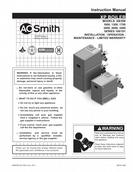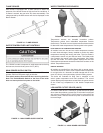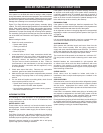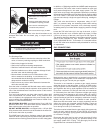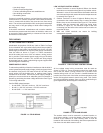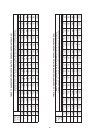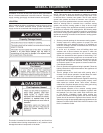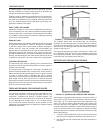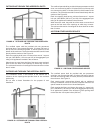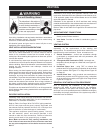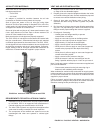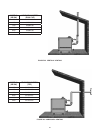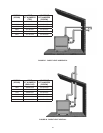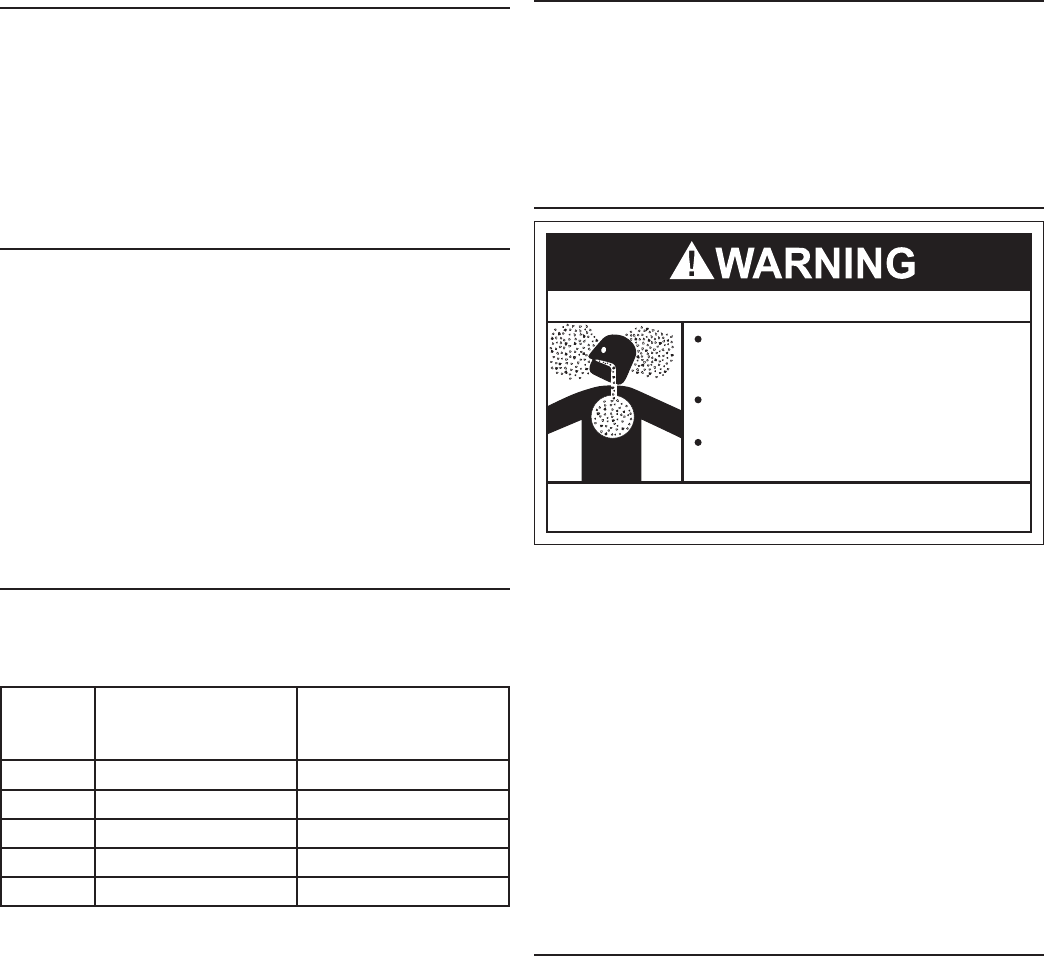
22
LEVELING
Because this unit is a Category IV appliance it produces some
amounts of condensation. The unit has a condensation disposal
system that requires this unit to be level to properly drain. Each
unit should be checked to be certain that it is level prior to starting
the unit.
If the unit is not level, obtain and insert shims under the feet at
the frame base to correct this condition.
AIR REQUIREMENTS
Breathing Hazard - Carbon Monoxide Gas
Install appliance in accordance with
the Instruction Manual and NFPA 54 or
CAN/CSA-B149.1.
To avoid injury, combustion and ventilation
air must be taken from outdoors.
Do not place chemical vapor emitting
products near water heater.
Breathing carbon monoxide can cause brain damage or
death. Always read and understand instruction manual.
For safe operation an adequate supply of fresh uncontaminated
air for combustion and ventilation must be provided.
An insufcient supply of air can cause recirculation of combustion
products resulting in contamination that may be hazardous to
life. Such a condition often will result in a yellow, luminous burner
ame, causing sooting of the combustion chamber, burners and
ue tubes and creates a risk of asphyxiation.
Do not install the boiler in a conned space unless an adequate
supply of air for combustion and ventilation is brought in to that
space using the methods described in the Conned Space
section that follows.
Never obstruct the ow of ventilation air. If you have any doubts
or questions at all, call your gas supplier. Failure to provide the
proper amount of combustion air can result in a re or explosion
and cause property damage, serious bodily injury or death.
UNCONFINED SPACE
An unconned space is one whose volume is not less than 50
cubic feet per 1,000 Btu/hr (4.8 cubic meters per kW) of the
total input rating of all appliances installed in the space. Rooms
communicating directly with the space, in which the appliances
are installed, through openings not furnished with doors, are
considered a part of the unconned space.
Makeup air requirements for the operation of exhaust fans,
kitchen ventilation systems, clothes dryers and replaces shall
also be considered in determining the adequacy of a space to
provide combustion, ventilation and dilution air.
UNUSUALLY TIGHT CONSTRUCTION
In unconned spaces in buildings, inltration may be adequate
to provide air for combustion, ventilation and dilution of ue
gases. However, in buildings of unusually tight construction (for
example, weather stripping, heavily insulated, caulked, vapor
barrier, etc.) additional air must be provided using the methods
described in the Conned Space section that follows.
PANELS AND COVERS
All panels and covers (e.g. control and junction box covers; front,
side and rear panels of boiler) must be in place after service and/
or before opera tion of boiler. This will ensure that all gas ignition
components will be protected from water.
The XP is a low-pressure boiler (Category IV) to be used as
either hot water supply (domestic/commercial water heating) or
hot water heating (hydronic) application. Category IV appli ances
are often termed “High Ef ciency” appliances.
CHEMICAL VAPOR CORROSION
Boiler corrosion and component failure can be caused by the
heating and breakdown of airborne chemical vapors. Spray can
propellants, cleaning sol vents, refrigerator and air conditioning
refrig erants, swimming pool chemicals, calcium and sodium
chloride (water softener salt), waxes, and process chemicals
are typical compounds which are potentially corrosive. These
materials are corrosive at very low concentration levels with little
or no odor to reveal their presence.
Products of this sort should not be stored near boiler. Also, air
which is brought in contact with boiler should not contain any
of these chemicals. If necessary, uncontaminated air should be
obtained from remote or outside sources. Failure to observe this
requirement will void warranty.
INSTALLATION CLEARANCES
This boiler is approved for installation in an alcove with minimum
clearances to combustibles.
TABLE 12. INSTALLATION CLEARANCES
RECOMMENDED
SERVICE
CLEARANCES
CLEARANCES FROM
COMBUSTIBLE
MATERIALS
Front 30" (762 mm) 8" (203 mm)
Rear 36" (610 mm) 24" (610 mm)
Left 24 " (610 mm) 1" (25.4 mm)
Right 24 " (610 mm) 2" (51 mm)
Top 24" (610 mm) 6" (152 mm)
2” (51 mm) clearance is allowable from combustible construction
for hot water pipes.
Sufcient area should be provided at the front and rear of the
unit for prop er servicing. In a utility room installa tion, the door
opening should be wide enough to allow the boiler to enter or
to permit the replacement of another appli ance such as a boiler.
FLOORING AND FOUNDATION:
All models are approved for installation on combustible ooring,
but must never be installed on carpeting. Do not install the boiler
on carpeting even if foundation is used. Fire can result, causing
severe personal injury, death, or substantial property damage.
If ooding is possible, elevate the boiler sufciently to prevent
water from reaching the boiler.













